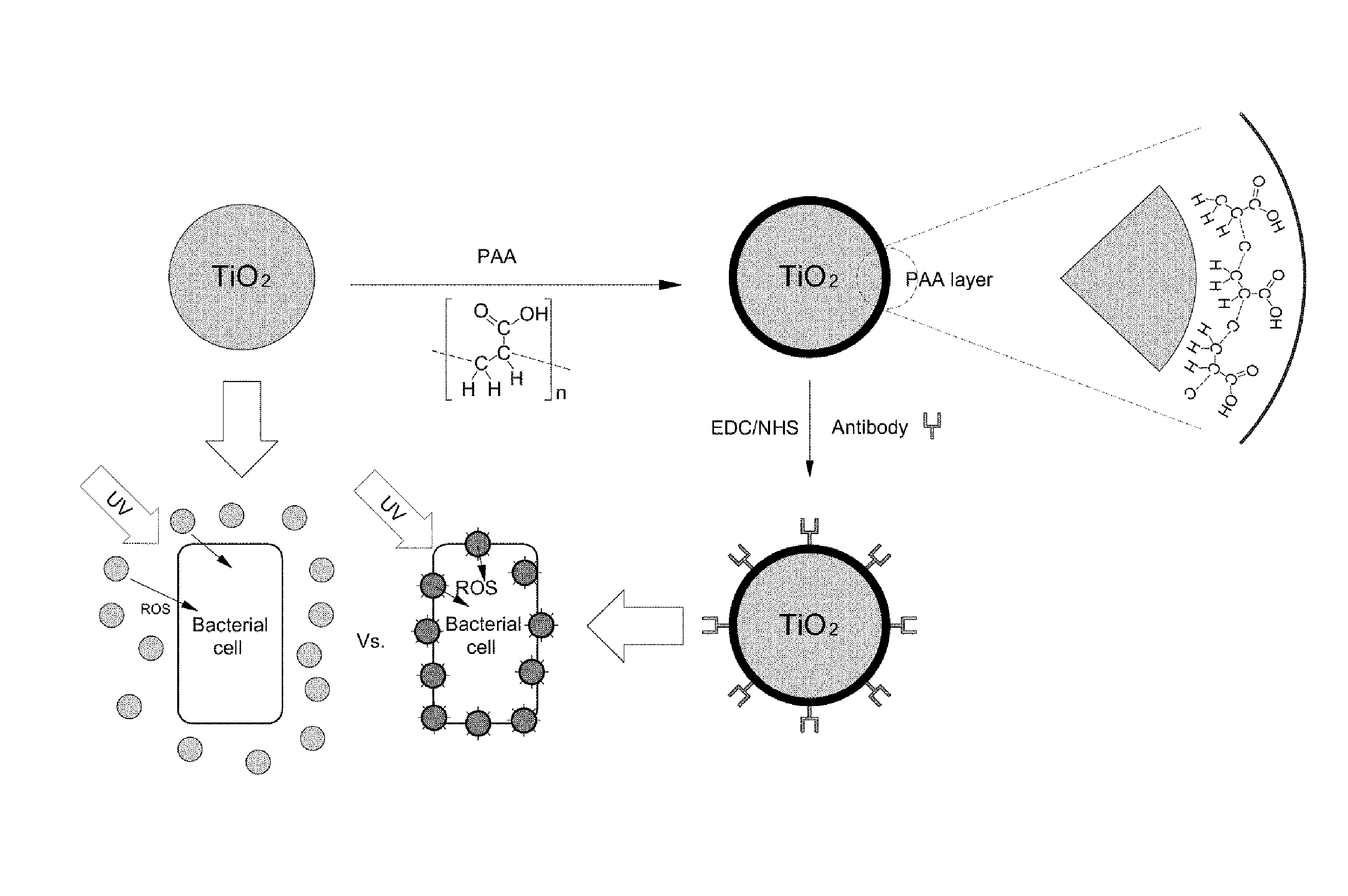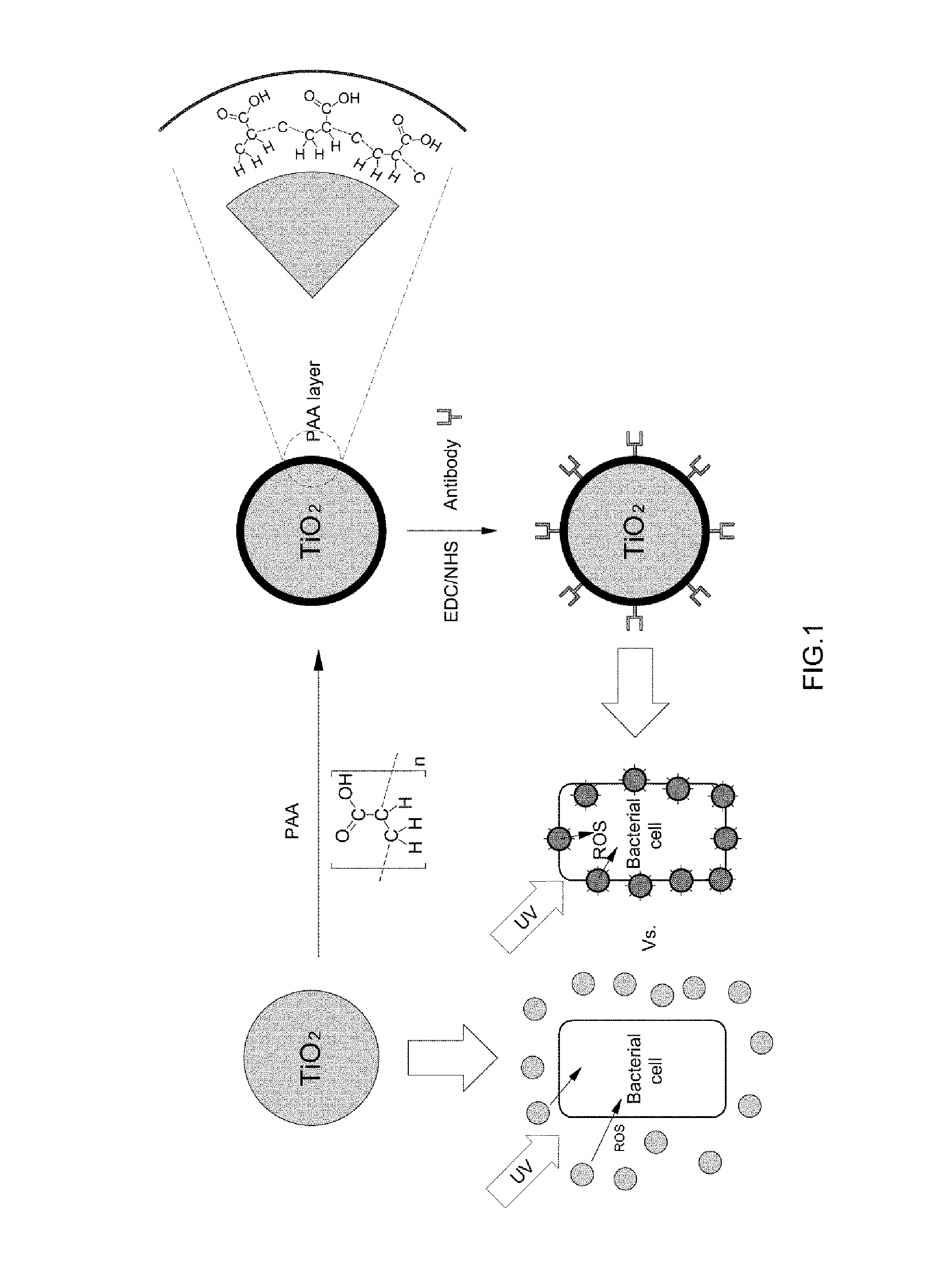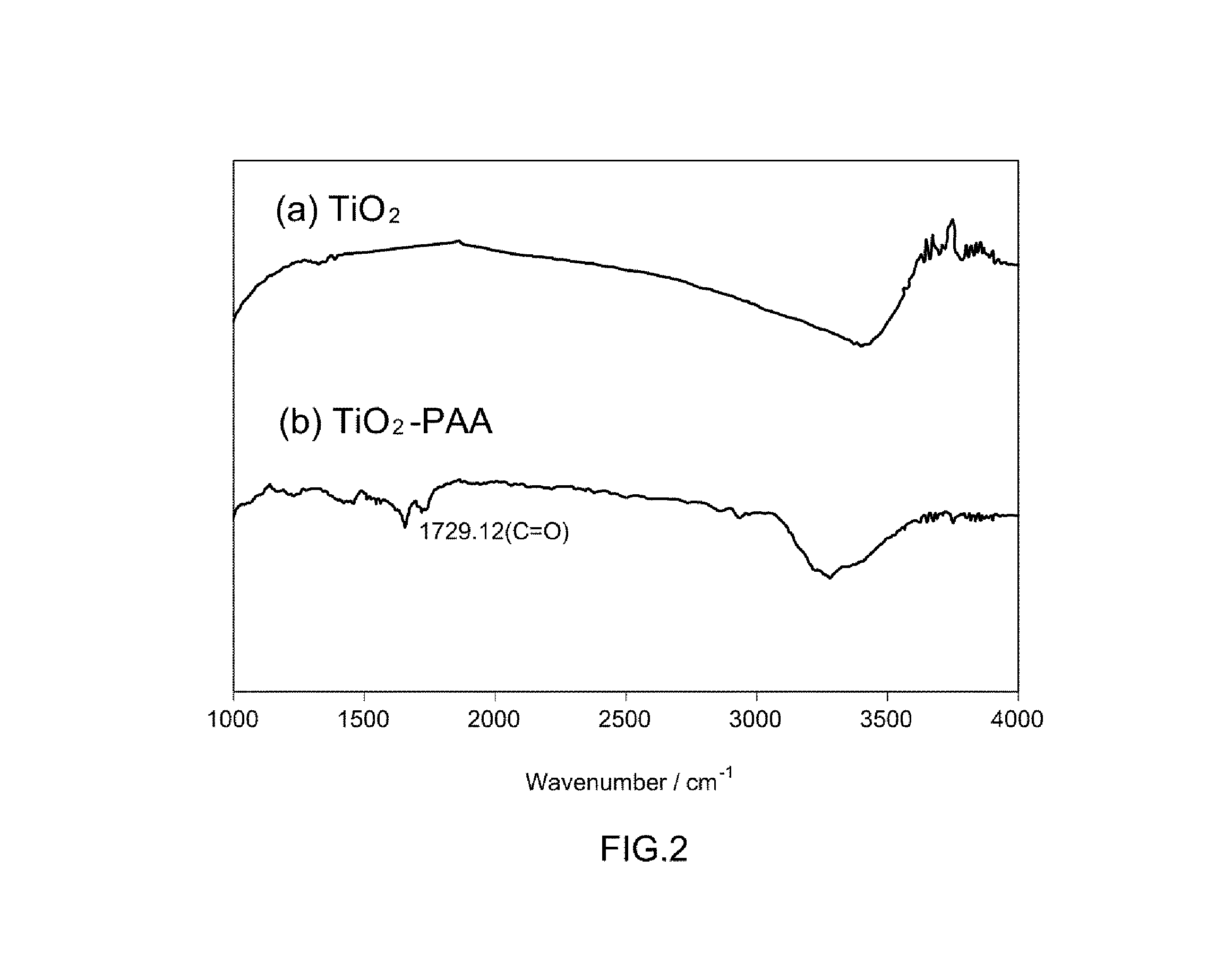Titanium oxide immobilized with bioreceptors and antibacterial method using the same
a technology of titanium oxide and bioreceptors, applied in the field of antibacterial composition, can solve the problems of no systemic research on the correlation between the number of microorganisms, the residence time of radicals generated by titanium oxide is not long, and the excitation into an unstable state, etc., to achieve excellent antibacterial activity and effectively sterilize a microorganism
- Summary
- Abstract
- Description
- Claims
- Application Information
AI Technical Summary
Benefits of technology
Problems solved by technology
Method used
Image
Examples
example 1
[0044]After E. coli was cultured in 100 mL of a LB medium until the OD600 reached 0.4, 12 mL of the culture solution was collected therefrom and subjected to centrifuging so as to separate E. coli. Thus separated E. coli was washed with 12 mL of a PBS buffer (pH 7.0) and dispersed in 5 mL of a PBS buffer (pH 7.0) in a 20 mL glass bottle. Three such samples were prepared in the same way. Titanium oxide particles immobilized with an E. coli specific antibody were added to a Bottle 1 and non-immobilized titanium oxide particles were added to a Bottle 2 in each amount of 0.25 mg. There was no added to a Bottle 3. All three bottles were put into a rotator shaking incubator which was set at 25° C., 200 rpm and subjected to shaking culture for 15 min. After 15 min, a 355 nm UV lamp (15 W) was installed at intervals of about 10 cm therefrom, and then UV was irradiated thereto. Before the UV irradiation (0 min) and after UV was irradiated for 15 min and at thirty-minute intervals thereafter,...
example 2
[0047]It was confirmed in Example 1 that the antibacterial activity of the titanium oxide particles immobilized with the E. coli specific antibody was significantly increased. In this Example, whether the titanium oxide immobilized with the E. coli specific antibody exhibited antibacterial activity to other cells besides E. coli was investigated. For this, Staphylococcus epidermidis cells were cultured according to the same method as E. coli. As a result of irradiating the cultured Staphylococcus epidermidis cells with UV, there was no difference in antibacterial activity between the addition of titanium oxide particles only and that of titanium oxide particles immobilized with the E. coli specific antibody (FIG. 3). This was because that the antibody immobilized to the titanium oxide particles was not specific to Staphylococcus epidermidis, and thus unlike E. coli, the titanium oxide particles did not adhere thereto, which results in dispersing the antibody titanium oxide particles...
example 3
[0049]From Examples 1 and 2, it was found that the titanium oxide particles immobilized with the E. coli specific antibody exhibited increased antibacterial activity to E. coli. In Examples 1 and 2, two kinds of microorganisms were cultured in a separate cultivator and the antibacterial activities thereon were investigated independently. In order to investigate whether the titanium oxide particles immobilized with the E. coli specific antibody can selectively sterilize E. coli when two kinds of microorganisms are existed, the antibacterial activity of the titanium oxide particles immobilized with the E. coli specific antibody to E. coli was measured in the presence of E. coli and Staphylococcus. After E. coli was cultured in 100 mL of a LB medium until the OD600 reached 0.4, 12 mL of the culture solution was collected therefrom and subjected to centrifuging so as to separate E. coli cells. After Staphylococcus was cultured in 100 mL of a LB medium until the OD600 reached 0.25, 20 mL...
PUM
| Property | Measurement | Unit |
|---|---|---|
| temperature | aaaaa | aaaaa |
| concentration | aaaaa | aaaaa |
| pH | aaaaa | aaaaa |
Abstract
Description
Claims
Application Information
 Login to View More
Login to View More - R&D
- Intellectual Property
- Life Sciences
- Materials
- Tech Scout
- Unparalleled Data Quality
- Higher Quality Content
- 60% Fewer Hallucinations
Browse by: Latest US Patents, China's latest patents, Technical Efficacy Thesaurus, Application Domain, Technology Topic, Popular Technical Reports.
© 2025 PatSnap. All rights reserved.Legal|Privacy policy|Modern Slavery Act Transparency Statement|Sitemap|About US| Contact US: help@patsnap.com



